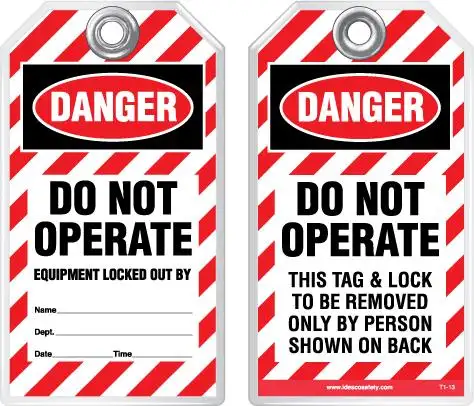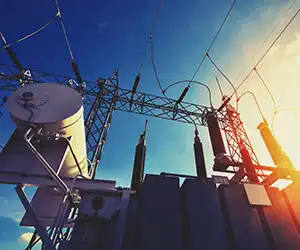Electrical Substation Design: Key Components
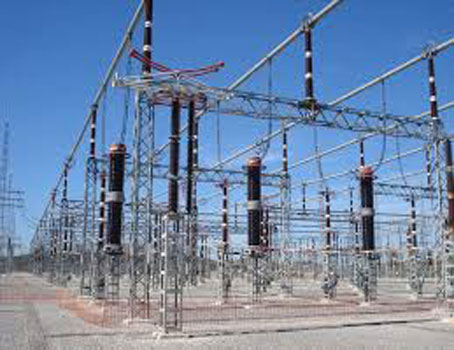
Substation Maintenance Training
Our customized live online or in‑person group training can be delivered to your staff at your location.
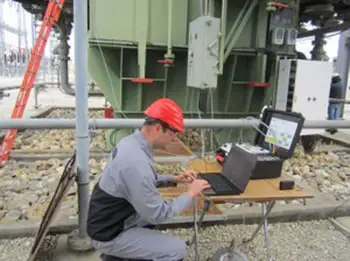
- Live Online
- 12 hours Instructor-led
- Group Training Available
Download Our OSHA 4474 Fact Sheet – Establishing Boundaries Around Arc Flash Hazards
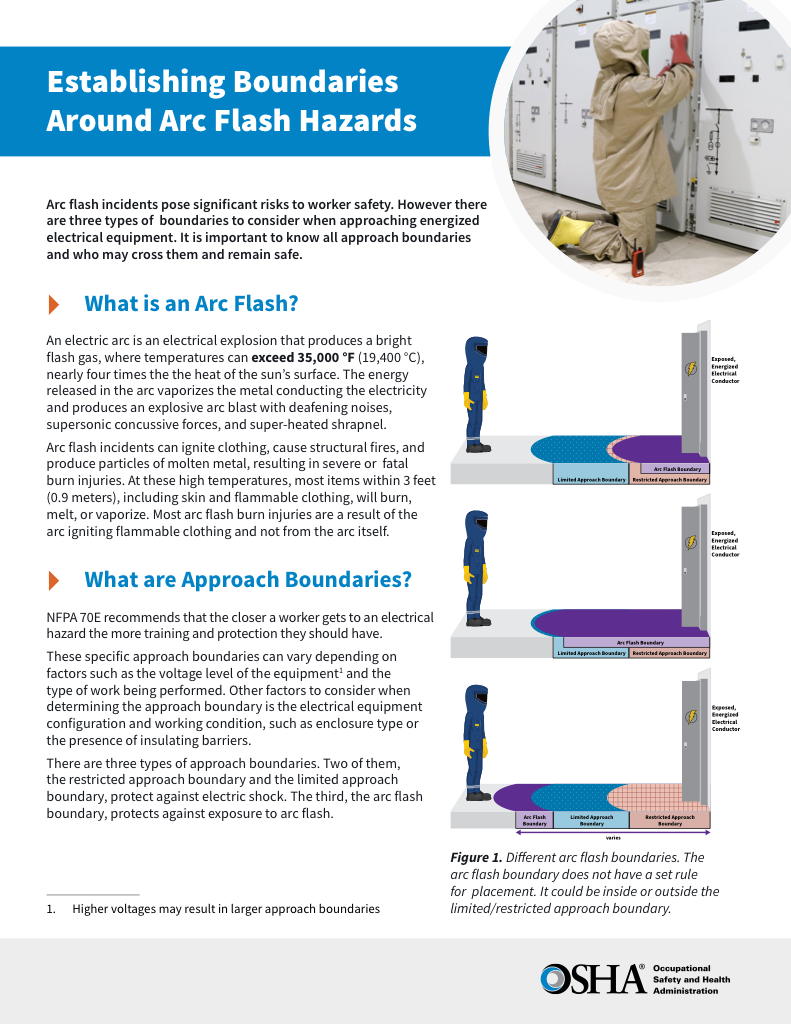
- Understand the difference between arc flash and electric shock boundaries
- Learn who may cross each boundary and under what conditions
- Apply voltage-based rules for safer approach distances
Electrical substation design involves more than basic layouts. It integrates station configuration, engineering layout, and voltage transformation facilities to manage power flow, ensure protection, and maintain reliable grid operation across transmission and distribution networks.
What is Electrical Substation Design?
Electrical substation design is critical in ensuring the efficient, safe, and reliable operation of today's power grids. Substations serve as key junction points in the transmission and distribution system, stepping up or down voltage and acting as control hubs for routing electricity to end-users. Proper design supports consistent power delivery and protects infrastructure and personnel from faults and failures.
✅ It is the process of planning, engineering, and organizing components like transformers, circuit breakers, and busbars to manage power flow.
✅ It ensures voltage regulation, system protection, and safe energy distribution between transmission lines and end-users.
✅ Effective design supports grid reliability, equipment safety, and future scalability for growing power demands.
To gain a deeper understanding of this process, refer to our overview of what an electrical substation is and how these facilities support the broader substation network.
Electrical Transformer Maintenance Training
Substation Maintenance Training
Request a Free Training Quotation
Core Elements of Substation Design
Designing a station involves integrating multiple components, including power transformers, circuit breakers, protection relays, and communication systems. Each element must be carefully selected and positioned to achieve optimal layout, maintain clearances, and allow safe maintenance access. Discover the crucial role of electrical substation components in enhancing functionality and reliability.
Station layout decisions are influenced by whether the facility is stepping down high-voltage electricity for local distribution or managing long-range high-voltage transmission. A well-engineered design strikes a balance between system functionality, safety, future expansion, and compliance with relevant standards.
Types: AIS vs GIS
Two dominant technologies define types: air-insulated substations (AIS) and gas-insulated substations (GIS). AIS designs are cost-effective and common in open-area installations. GIS systems, covered in our gas insulated substation guide, offer compactness and reliability in urban or environmentally constrained environments.
Test Your Knowledge About Electrical Substations!
Think you know Electrical Substations? Take our quick, interactive quiz and test your knowledge in minutes.
- Instantly see your results and score
- Identify strengths and areas for improvement
- Challenge yourself on real-world electrical topics
The choice between AIS and GIS influences every part of the substation's design, from the footprint to the component cooling systems.
Protection and Control Strategies
Protective devices are crucial for maintaining system stability and mitigating faults. These systems must react quickly, from circuit breakers in substations to protective relays and automation controls, to isolate faults and prevent cascading outages.
To explore automation's growing role, visit our section on substation automation, as well as digital substations, which integrate IEDs and smart sensors.
Power Transformers and Equipment Selection
The heart of a station is its transformer. Refer to our guide on electrical substation transformers to learn about their selection and maintenance. Transformer voltage ratings, insulation class, and placement within the design framework are key to performance.
Additional critical components include capacitor voltage transformers, busbars, instrument transformers, and substation breakers, each serving a specific operational function.
Redundancy and Reliability Engineering
High-reliability design often involves ring bus or breaker-and-a-half configurations, fault tolerance, and equipment redundancy. Substation protection schemes ensure that any failure can be isolated without interrupting service.
Grounding is equally important. For a comprehensive overview, see our page on substation grounding, which details how fault currents are safely dissipated and personnel hazards are minimized.
Environmental and Safety Considerations
Modern stations must address noise, oil containment, wildlife intrusion, and resilience against physical threats. Layouts must also consider potential for expansion and disaster recovery. Events like substation explosions underscore the importance of rigorous design safety.
Specialized Types
Certain applications require unique designs, such as the tie substation, which connects two transmission lines without transforming the voltage. These require specialized layout and coordination logic.
Maintenance, Training, and Lifespan Support
Design should also facilitate maintenance and support lifecycle performance. Discover our articles on electrical substation maintenance and explore our substation maintenance training programs designed for utility professionals.
For hands-on education in design, view our substation design training and substation automation training opportunities, or browse our broader substation training catalog.
Design is a multifaceted engineering discipline that involves a complex interplay of safety, efficiency, and reliability. It encompasses various considerations, including selecting suitable locations, ensuring compliance with stringent safety standards, designing robust protection and control systems, and mitigating environmental impacts. Key aspects include carefully selecting equipment, such as transformers and circuit breakers; implementing effective grounding and earthing systems; and choosing between GIS and AIS technologies. Ultimately, the goal of equipment design is to create a reliable and efficient power infrastructure that meets the evolving demands of modern society while minimizing environmental impact and ensuring the safety of both personnel and the public.
Frequently Asked Questions
What are the key components, and how are they selected?
Stations rely on transformers, switchgear, busbars, instrument transformers, protective relays, surge arresters, and SCADA systems to operate effectively. Selection depends on voltage, current capacity, fault tolerance, and control needs. Components must match system demands and protection criteria.
How to determine the optimal layout?
Layout depends on function, available space, safety clearances, maintenance access, and future expansion. Urban sites favor compact designs; rural areas allow wider spacing. Environmental and operational constraints guide the placement of all equipment.
What are the safety standards and regulations?
Design follows IEEE (e.g., IEEE 80, C37), IEC (e.g., IEC 61850, 62271), NEC, and OSHA guidelines. These cover grounding, insulation, clearances, fire safety, environmental controls, and worker protection through the use of proper signage, barriers, and ventilation.
What considerations are involved in grounding?
Grounding systems dissipate fault currents safely using buried conductor grids and electrodes. Lightning protection uses arresters, shield wires, and insulation coordination to prevent damage from voltage surges and protect personnel from step and touch potentials.
Related Articles






